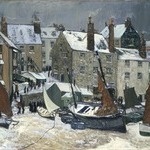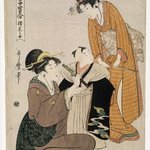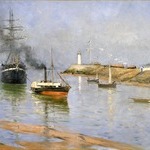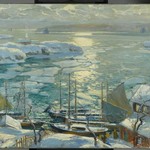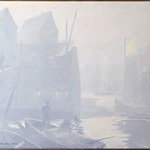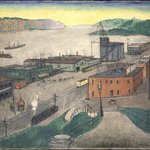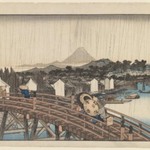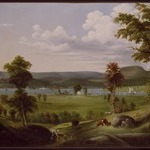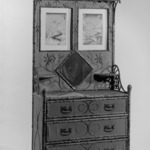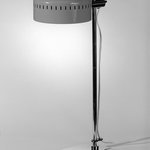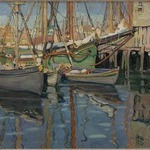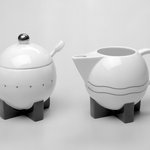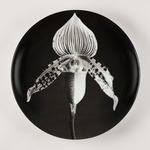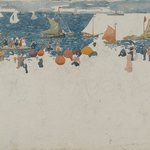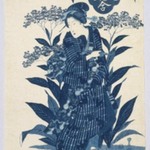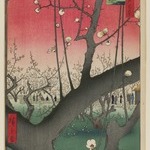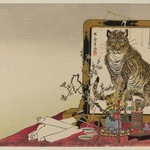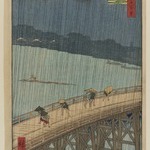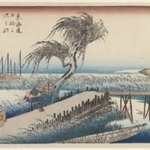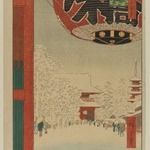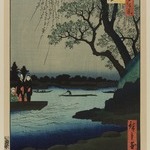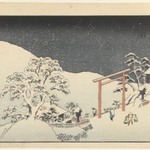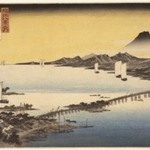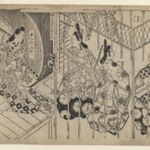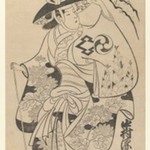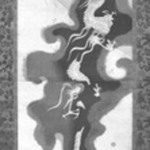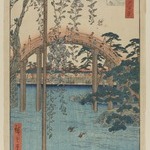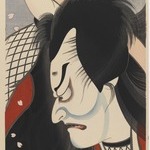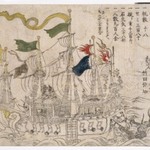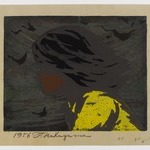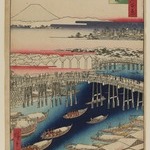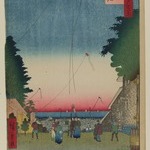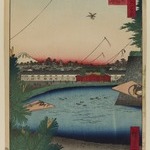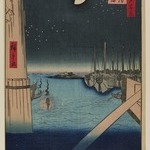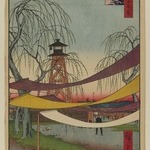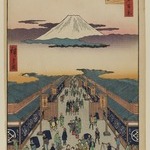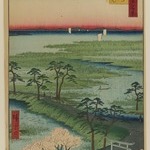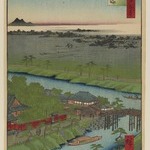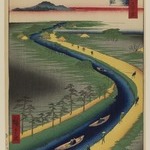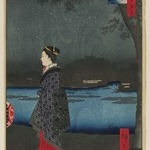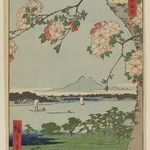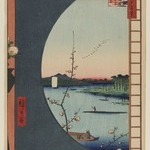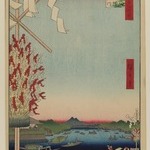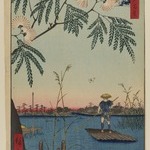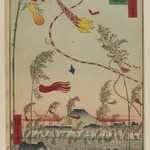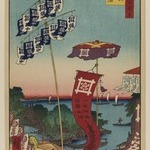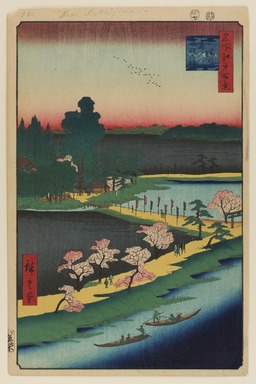
Asuma Shrine and the Entwined Camphor, No. 31 in One Hundred Famous Views of Edo
Utagawa Hiroshige
Asian Art
It is dusk on a spring day. A flock of birds crosses the dimming northeast sky as two boats pass each other below on the canal. The surface of the path to the Azuma Shrine is bathed in yellow, reflecting the late afternoon sun. Across the small bridge at the entrance to the shrine is the giant split trunk of the sacred tree known as the Entwined Camphor. The tree recalls an ancient legend about the mythical lovers Prince Yamato Takeru and Princess Ototachibana.
MEDIUM
Woodblock print
DATES
7th month of 1857
PERIOD
Edo Period, Ansei Era
DIMENSIONS
Image: 13 3/8 x 8 3/4 in. (34 x 22.2 cm)
Sheet: 14 5/16 x 9 5/16 in. (36.4 x 23.7 cm) (show scale)



MARKINGS
Publisher: Shitaya Uo Ei
SIGNATURE
Hiroshige-Hitsu
COLLECTIONS
Asian Art
ACCESSION NUMBER
30.1478.31
CREDIT LINE
Gift of Anna Ferris
PROVENANCE
Prior to 1930, provenance not yet documented; by 1930, acquired by Anna Ferris of Summit, NJ; 1930, gift of Anna Ferris to the Brooklyn Museum.
Provenance FAQ
CATALOGUE DESCRIPTION
Two boats pass each other on the North Jukkengawa Canal in the late afternoon sun. Between the shrine pennants are the darkened rice paddies on the left and a lotus pond on the right. Across the small bridge are the precincts of Azuma Shrine where a group of people are looking up at the giant split trunk of the sacred tree, known as the "Entwined Camphor" (Renri no kusu). Beyond to the left stand the shrine buildings. The legend of the "Entwined Camphor" goes back to Prince Yamato Takeru's journey to conquer the barbarians and wishing to cross the straits across the entrance to Edo Bay, where he was confronted by the angry god of the sea, his consort, Princess Ototachibana sacrificed herself to the sea to calm the waves and the prince was able to continue on his mission. Days later, the princess' comb washed up on the beach and was enshrined here in a small burial mound. The prince took a pair of camphor chop-sticks and buried them in the mound and they grew together into the paired tree seen here split into male and female trunks above. The prince gave the name, Azuma, for this place (Ao tsuma) and hence became a conventional term for this area of Japan. The entwined camphor survived until World War II when it was destroyed in a fire-bombing. Recently, a new pair was planted, apparently, in the hope that they might grow together as one, as before.
EXHIBITIONS
MUSEUM LOCATION
This item is not on view
CAPTION
Utagawa Hiroshige (Japanese, 1797–1858). Asuma Shrine and the Entwined Camphor, No. 31 in One Hundred Famous Views of Edo, 7th month of 1857. Woodblock print, Image: 13 3/8 x 8 3/4 in. (34 x 22.2 cm). Brooklyn Museum, Gift of Anna Ferris, 30.1478.31 (Photo: Brooklyn Museum, 30.1478.31_PS20.jpg)
IMAGE
overall, 30.1478.31_PS20.jpg. Brooklyn Museum photograph, 2023
"CUR" at the beginning of an image file name means that the image was created by a curatorial staff member. These study images may be digital point-and-shoot photographs, when we don\'t yet have high-quality studio photography, or they may be scans of older negatives, slides, or photographic prints, providing historical documentation of the object.
RIGHTS STATEMENT
No known copyright restrictions
This work may be in the public domain in the United States. Works created by United States and non-United States nationals published prior to 1923 are in the public domain, subject to the terms of any applicable treaty or agreement.
You may download and use Brooklyn Museum images of this work. Please include caption information from this page and credit the Brooklyn Museum. If you need a high resolution file, please fill out our online application form (charges apply).
The Museum does not warrant that the use of this work will not infringe on the rights of third parties, such as artists or artists' heirs holding the rights to the work. It is your responsibility to determine and satisfy copyright or other use restrictions before copying, transmitting, or making other use of protected items beyond that allowed by "fair use," as such term is understood under the United States Copyright Act.
The Brooklyn Museum makes no representations or warranties with respect to the application or terms of any international agreement governing copyright protection in the United States for works created by foreign nationals.
For further information about copyright, we recommend resources at the United States Library of Congress, Cornell University, Copyright and Cultural Institutions: Guidelines for U.S. Libraries, Archives, and Museums, and Copyright Watch.
For more information about the Museum's rights project, including how rights types are assigned, please see our blog posts on copyright.
If you have any information regarding this work and rights to it, please contact copyright@brooklynmuseum.org.
RECORD COMPLETENESS
Not every record you will find here is complete. More information is available for some works than for others, and some entries have been updated more recently. Records are frequently reviewed and revised, and we welcome any additional information you might have.
